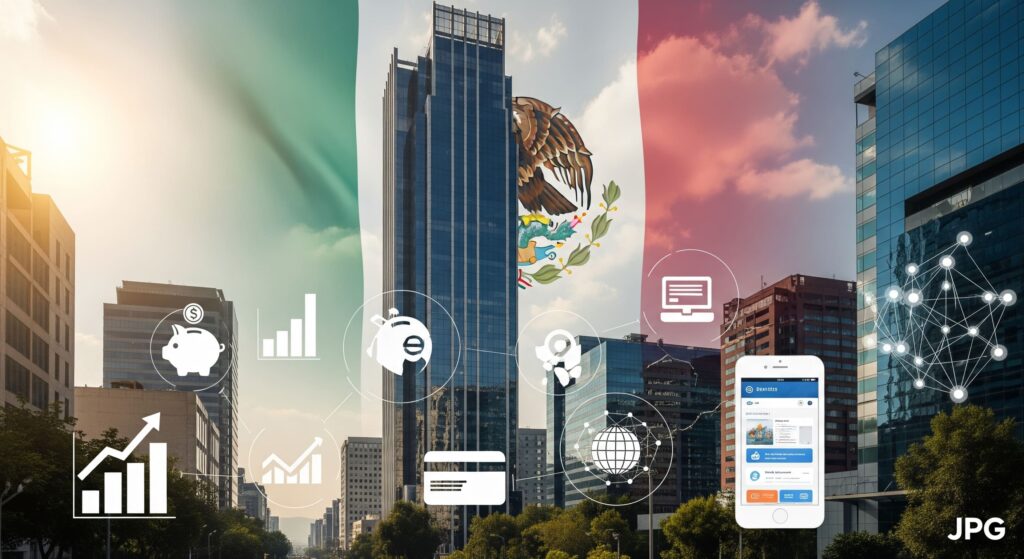Early Roots: Monte de Piedad and Inclusive Lending
Mexico’s journey with non‑bank financial services stretches back centuries. One of the earliest institutions, the Nacional Monte de Piedad, was founded in the 1770s in Mexico City to offer low‑interest loans secured by pawned items such as jewelry or household goods. Created as a charitable institution, it aimed to provide financial relief to the poor—making it one of the world’s oldest pawnshops with a philanthropic mission. Over time, Monte de Piedad grew into a widely trusted institution, expanding its reach across Mexico and becoming embedded in everyday financial habits.
Mid‑20th Century: Formalizing Financial Services
In the 1920s and 1930s, Mexico began shaping its modern financial sector. Banking reforms in 1924 laid the foundation for structured chartering of financial entities. By 1941, the country introduced a comprehensive banking act and formal legislation through an organic law for the central bank, Banco de México.
During this period, Mexico’s financial architecture diversified beyond traditional banks. The creation of development banks such as Banobras in 1933 provided targeted funding for public infrastructure and urban development, operating outside the commercial banking system.
Emergence of SOFOMs: Specialized Credit Providers
In the late 20th and early 21st centuries, Mexico witnessed the birth of Sociedades Financieras de Objeto Múltiple (SOFOMs)—non-bank entities focused on granting loans and credit. These emerged in two forms: SOFOM ENR (unregulated) offered rapid market entry with limited oversight, while SOFOM ER (regulated) fell under supervision by the National Banking and Securities Commission (CNBV). Introduced through reforms to expand credit access, SOFOMs provided agile financing options, particularly for SMEs and underserved markets.
SOFIPOs and Financial Inclusion
Parallel to the SOFOM movement, SOFIPOs (Popular Financial Societies) arose as institutions aimed at low-income individuals and micro, small, and medium-sized enterprises. Regulated by the CNBV, SOFIPOs offer savings accounts, loans, remittance services, and payment products. Like SOFOM ERs, they are structured to bring formal financial services to underserved communities.
By 2020, non‑bank credit—including consumer, mortgage, and business lending—was roughly on par with banking sector volumes, indicating the rising importance of these institutions.
Microfinance and the Evolution of Informal Credit
Mexico’s microfinance journey includes entities like Compartamos Banco, which began as a non‑profit microfinance institution and later became a for‑profit regulated bank. This transition enabled scale and commercialization of micro‑lending, though it drew criticism over high interest rates. These pioneering models paved the way for non‑bank financial institutions to serve the working poor—especially women—who lacked access to traditional banking.
Government‑Led Inclusion: Cetesdirecto and Retail Access to Capital Markets
Another non‑bank innovation is the Cetesdirecto platform, launched in 2010. This government‑run program enables small and medium investors to directly buy and sell government securities with minimal amounts and no brokerage fees. Cetesdirecto opened capital market access to ordinary citizens, expanding financial inclusion beyond banks and brokers.
Fast‑Emerging Fintech Ecosystems
In more recent years, Mexico’s fintech sector, powered by the 2018 fintech law, has introduced new non‑bank players: e-wallets, payment platforms, digital lenders, and corporate credit services. Although the fintech law requires updates and regulators face resource challenges, these companies are innovating financial services rapidly while targeting unbanked populations and SMEs.
Patterns and Lessons: Resilience, Inclusion, and Regulation
Throughout Mexico’s history, non‑bank financial structures have consistently filled gaps left by traditional banks—whether through pawn loans, microfinance, development finance, or retail investment platforms. When properly regulated, they enhance financial inclusion, extend access to credit, and foster savings and investment among underserved populations.
However, rapid expansion—particularly among SOFOMs during credit booms—can lead to vulnerabilities. A 2007–2009 crisis exposed how liquidity constraints, non‑performing loans, and weakening underwriting practices caused a contraction in finance companies (SOFOLES), underscoring the need for balanced regulation and robust governance.
Conclusion: A Continuum of Innovation
From the charitable origins of Monte de Piedad in the 18th century to today’s fintech revolution, Mexico’s non‑bank financial institutions reflect a rich tradition of innovation, inclusion, and adaptation. These structures have evolved steadily—from low‑interest pawn loans to tech‑driven financial platforms—offering ever more ways to bring formal financial access to millions.
As Mexico navigates the future, the strategic growth of SOFOM ERs, SOFIPOs, fintechs, and digital platforms—informed by history and grounded in regulatory strength—will be vital. These institutions stand as pillars of financial empowerment and resilience, helping build a more inclusive and dynamic financial ecosystem for all Mexicans.

